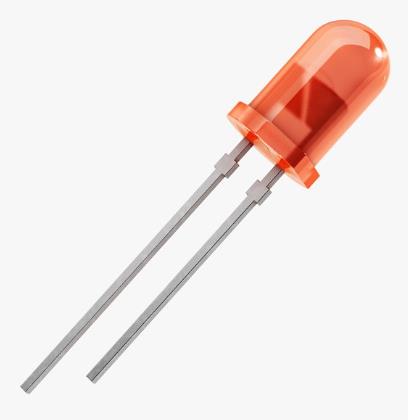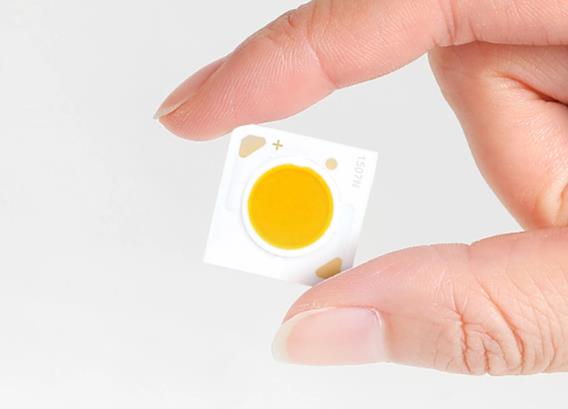LED is a semiconductor component that can emit visible light. As an energy-efficient and environmentally friendly light source, LED is widely used in information display, i.e. LED screens, signal lights, automotive lamps, LCD screen backlights, general lighting and other fields.
LED can emit red, green, blue and other single colors of light by controlling the luminescent material and current, and can also display full-color display effects by mixing these basic colors. In addition, by controlling the current, LED can also present colors with different brightness and saturation.
The emergence of LED has not only completely changed the landscape of the lighting field, but also played an increasingly important role in the display field.

LED, abbreviation for light emitting diode, is a solid-state semiconductor device that can directly convert electricity into light. The core of LED is a semiconductor chip, which is composed of P-type semiconductor and N-type semiconductor, which form a PN junction when in contact. When current acts on the chip through a wire, electrons will be pushed to the P region, where electrons and holes recombine and then emit energy in the form of photons. That is how an LED emits light.
LEDs have many notable features and advantages, including:
High efficiency and energy saving: The luminous efficiency of LED is much higher than traditional light sources, such as incandescent lamps and fluorescent lamps. Under the same lighting effect, LED can significantly reduce energy consumption.
Long service life: The service life of LEDs far exceeds that of traditional light sources, usually reaching tens of thousands of hours or even more than 100,000 hours, greatly reducing the cost of replacement and maintenance.
Environmental protection: LEDs do not contain harmful substances such as mercury, and have little impact on the environment during production and use, which is in line with the concept of environmental protection nowadays.
Fast response: LEDs response fast, usually in the microsecond level, which gives LEDs a great advantage in applications that require instant on/off.
Rich colors: LED can not only emit monochromatic light such as red, green, and blue, but also various colored light obtained through color mixing technology, which makes LED have broad application prospects in lighting, display and other fields.
There are many different types of LEDs according to different classification standards. Here are some commonly mentioned types of LEDs in our daily use of LED lighting and LED displays.
DIP LED: full name Dual In-line Package LED, also known as plug-in LED. It is the earliest type of LED, with a square or round appearance and two pins encapsulated, which can be connected by directly plugging into the circuit board. DIP LED has high brightness and reliability, and is suitable for some special lighting scenarios, such as outdoor signs and indicator lights.

DIP LED
SMD LED: The full name is Surface Mount Device LED, also known as surface mount LED. Compared with DIP LED, SMD LED is smaller in size, brighter, and has better light uniformity, so it is more widely used in the market. SMD LED mainly has two packaging forms: square and round. Common models in the field of lighting fixtures include 3528, 5050, etc., while in the field of LED screens, they are generally smaller LED lamp beads, such as Kinglight 0606 MiP LED, which has an outer size of only 0.65*0.65mm, and can easily build a micro-pitch, ultra-high-definition LED display.

Kinglight provides various SMD LEDs for screen display manufacturing
COB LED: The full name is Chip On Board LED, also known as integrated package LED. It uses multiple LED chips packaged on the same circuit board to form a high-brightness, high-light-collecting-efficiency LED. Since COB LEDs are packaged on the same circuit board, they can achieve higher brightness and better luminous uniformity, and are suitable for large-area lighting, such as indoor commercial lighting and outdoor advertising light boxes.

The color of LED depends on the materials used. Common colors include yellow, green, red, orange, blue, purple, cyan, white, full color, etc. These LEDs of different colors can be used in different occasions, such as indicator lights, display screens, lighting fixtures, etc.
Indicator LED: Mainly used as indicator lights for various electronic devices, such as computer hosts, mobile phones, remote controls, etc. This type of LED usually has a smaller size and lower power consumption.
LED for lighting: includes various LED lamps, such as LED bulbs, LED tubes, LED floodlights, etc. This type of LED has high brightness and long service life, and is widely used in indoor and outdoor lighting.
Display LED: Mainly used in various display screens, such as LED display screens, LED dot matrix screens, etc. This type of LED can form various patterns and texts to achieve dynamic display effects.
RGB LED: LEDs with three colors of red, green and blue can achieve a combination of multiple colors by controlling the brightness of each color. RGB LED is widely used in displays, stage lighting, landscape lighting and interior decoration.
High-brightness LED: refers to LEDs with higher brightness, usually used in indoor and outdoor lighting scenarios. High-brightness LED has high brightness, long service life and low energy consumption, becoming the mainstream product in the field of modern lighting.
In summary, LEDs comes in different types in accordance with different packaging technologies, colors, usages, etc., each with its own unique characteristics and application scenarios. With the continuous advancement and innovation of technology, the types and performance of LEDs will continue to improve, bringing more possibilities to the lighting and display fields.